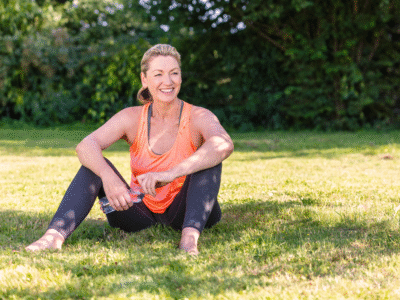Youngsters have had a lot to deal with during the past few years. Here’s how you can help them through different stages of life — from starting school to taking exams — to help them become more resilient.
Growing up can be hard at the best of times, but the past couple of years have been particularly challenging for young people. Trying to help kids navigate what life throws at them, whether as a teacher or a parent, isn’t always easy – not least when we have anxieties of our own.
We’ve looked at helping children of various ages face life’s challenges, but if a child continues to seem stuck or overwhelmed, talk to a mental health professional.

Allow preschoolers to express their feelings
Children this age are often unable to express anxieties and fears, so you need to be alert to signs of fear or sadness that may indicate that they’ve been unsettled by events or overheard conversations or frightening news. These signs can be clinginess, the resuming of old habits you thought they’d overgrown and irritability. Using art or play to help them express their fear, including made-up games, can help them put their feelings into pictures or words. Family closeness is also crucial at this time: hugs, games and reading together.
Bring out their favourite books and show them that, just like their beloved characters and storybook heroes, they can overcome any obstacle thrown their way, no matter how big or small. And just like them, they’re allowed to smile, cry, fear or feel angry. Letting them express themselves without judgement is key. As occupational therapist Katie Crosby (@thrivinglittles) points out: “How we respond to kids’ emotions shapes the stories about who they are.”
Respond to primary schoolchildren’s anxiety
This is an age when children start opening up more to outside influences, so anxieties can rise, meaning kids often look to parents and/or teachers to make them feel safe. Signs might be being rattled by daily stresses that haven’t bothered them in the past or overreacting to things like low marks in a test or social events. Let them know that their efforts never go to waste no matter the grades, and that it’s ok to feel overwhelmed from time to time. Make them feel safe by reassuring them. But, more importantly, answer their questions honestly: this lets them know you’re not brushing their fears under the carpet. If necessary, limit their consumption of news or check they’re not misinterpreting world events.

Reduce exam stress by letting teens breathe
Increased academic demands and more complex social lives can make these years tricky — and, at the same time, kids may start to push you away. The surge in hormones can also create a volatile atmosphere in which conversations quickly change to arguments. Add in the stress of exams and things can get heated very easily. Empathy is key, including talking to children about your own feelings, reactions to stress and coping mechanisms. This will remind them that you’re human, and make you feel more approachable.
During exam season, make sure they have everything they need when it comes to eating and hydrating properly, but without smothering them. It’s important to make sure they’re not over-working, so encourage them to take short breaks and continue to make time for friends. Let them know you’re there should they need anything, but refrain from constantly checking up on them or asking them about the progress of their studies.
Not forcing conversations is key. It’s better for parents to ‘catch children unawares’ by chatting to them while driving or while doing chores, as this can feel less confrontational. Ask them their opinions before giving your own. Ensure they have their own space to retreat to and encourage them to express themselves through journalling or art.













